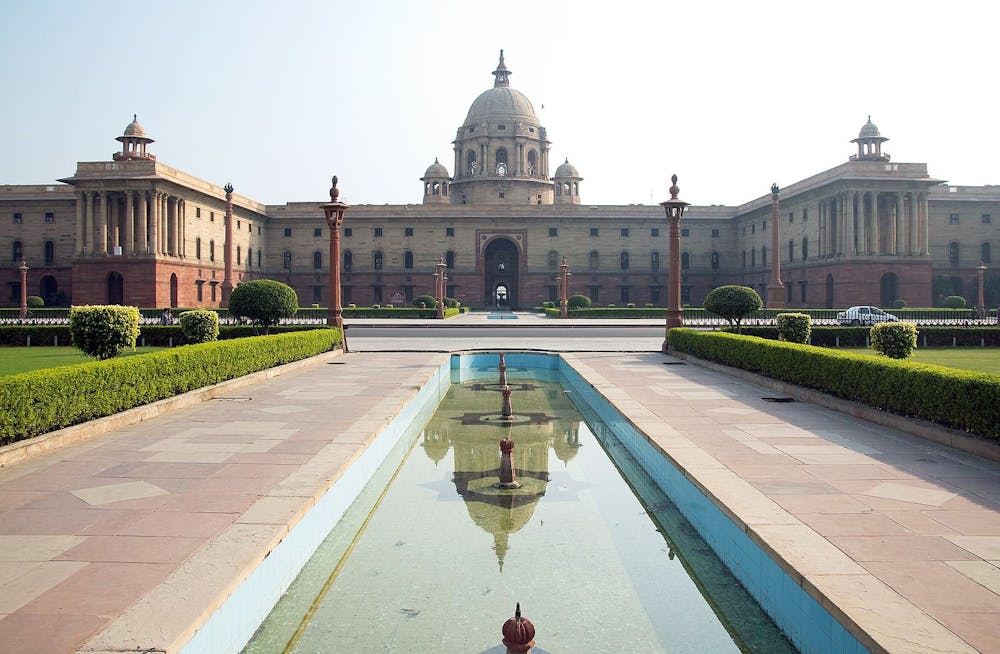A study co-authored by a University research scholar that predicted as many as 250 million people in India could become infected with COVID-19 has gained attention in Indian media outlets.
The paper, which states that testing delays were “seriously reducing the ability of the population to protect itself,” was published before Indian Prime Minister Narendra Modi ordered a “complete” lockdown of the country on March 24. That measure renders the study’s estimated figures outdated.
“I think [the lockdown] definitely will slow down the virus, by a large magnitude for sure,” noted Dr. Gary Lin, a postdoctoral fellow at Johns Hopkins University who worked on the project. “Across the board most public health researchers would agree.”
Coauthored by Dr. Ramanan Laxminarayan, a Senior Research Scholar at Princeton University, the study was jointly published with researchers at Johns Hopkins University and the Center for Disease Dynamics, Economics & Policy (CDDEP). Since the study’s release, the researchers inserted a clarification stating that the paper does not reflect the views of their affiliated institutions.
“Across all major newspapers, [the study’s] figures are being used,” Kanishkh Kanodia ’23, a former contributing writer at the ‘Prince’ who has returned home to India, said. “Most of the articles I read on the Indian Express, The Hindu, or the Wire [have] quoted the model.”
After circulating across some Indian media outlets, the study’s legitimacy briefly came into question. In response to a post that questioned the study’s authenticity, the University tweeted that they “did not authorize the use of our logo” and were “looking into it to get it fixed.”
Johns Hopkins University tweeted a similar message.
Since then, both institutions have confirmed that the work was conducted by their faculty. The issue stemmed from the researchers’ use of an outdated University logo, which has since been updated.

“As we said in a tweet on March 28, we confirmed that this research was done at Princeton and is being submitted for peer review,” University Deputy Spokesperson Mike Hotchkiss wrote in a statement to The Daily Princetonian. “We were also able to connect with Dr. Laxminarayan and ensure he has the current University mark to include on his work.”
The report was also “updated to clarify its authors [sic] affiliations and does not reflect the views of CDDEP, Johns Hopkins, or Princeton.”
By the time of publication, Laxminarayan had not responded to a request for comment.
The predictions made in the paper have generated concern in India, with some observers nothing that the predictions suggest “a grim picture.”

Lakshya Kaura ’22, an international student currently at home in India, said he felt that the predicted numbers were “too large.”
Lin said that the “objective” of the project researchers “wasn’t to provide the warmest take on this. Our objective was to provide a possible scenario that might happen given ... certain conditions.”
He emphasized, however, that the public should not take any reports “at face value without reading the assumptions.”
The report lists a variety of suppositions made in the models. They include contact rates by age, international travel rates in India, severity of COVID-19 cases by age, the effect of environmental conditions on virus transmission, and testing protocols.
Lin said that taking such assumptions into account is necessary to understand the research.
“It’s pretty dangerous, it conveys a kind of a doomsday scenario,” he said of surface-level interpretations. “That wasn’t our intention.”
According to Kaura, “many people have been following the curfew quite strictly.”
“I feel all the steps being taken by the government will ensure that the number of cases doesn’t become as large as the prediction,” he said.
Kanodia said the lockdown has helped people realize the gravity of the pandemic.
“I think it has been effective in [...] spreading a sense of fear among the population that this is serious and that we need to stay indoors to protect ourselves,” he said. “The necessary sort of fear the people needed to be ready against the pandemic.”
Kanodia felt that the lockdown was “absolutely essential” since the spread of the virus in India could have devastating implications. He noted that “the sheer scale of this has baffled everyone,” especially with a lack of prior planning for issues such as the internal migration of migrant workers and distribution of essential goods.
He commended the Indian government for enacting measures to ameliorate the situation, noting that the rest of the world had not expected such an effective and immediate response from India.
“I think India has taken some very decisive actions when other countries around the world were still mulling over what to do,” Kanodia added.
Similarly, Kaura said that, like many countries, India “is doing its best to face the pandemic with the resources available.”
“I am really proud how India is dealing with the situation by coming up with different ideas like quarantine trains, making hotels into quarantine centers, etc.,” he said.
Despite fears over the spread of COVID-19 in a nation as populous as India, Kaura expressed hope.
“Everyone thought that India was the one that was going to slip up, but till now it’s going strong even though we have had a few hiccups,” he said. “I really hope people’s image about India changes after this incident if we overcome it successfully.”








